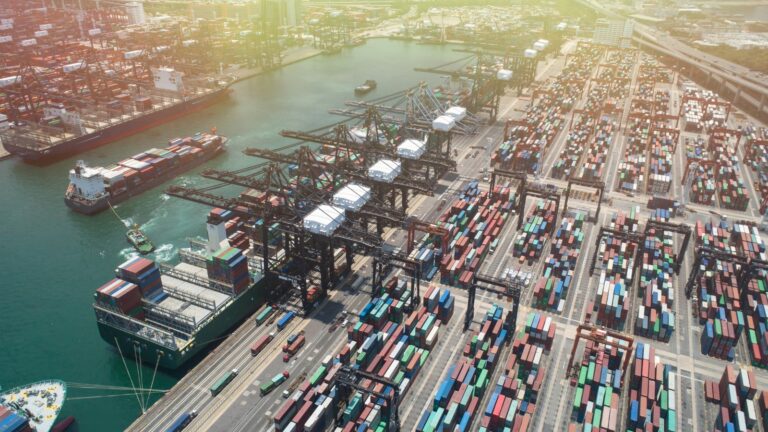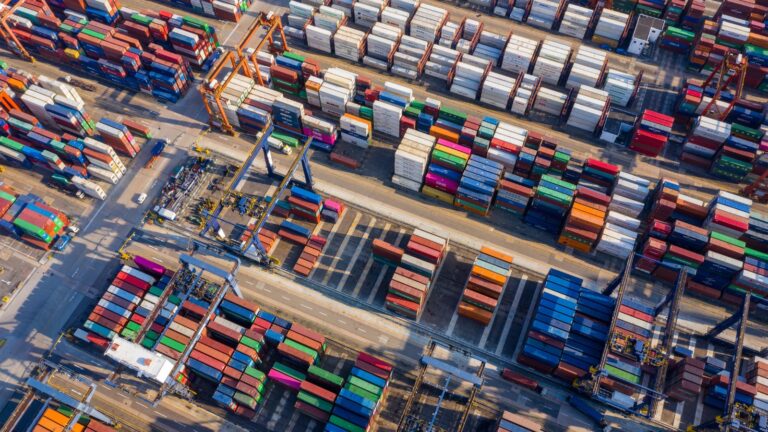Having a well-formed supply chain is similar to being weaponed before facing a battle. What is your take on this? Most of the industries in the business world depend on the fact that how effective their supply chain management is. This is why the Singaporean corporate world has put more emphasis on this. However, we can see even the supply chain becomes subjected to many trends when considering the expanding opportunities for growth.
This article will help you to understand the key supply chain industry trends that impact the whole process of supply chain management in Singapore and its effectiveness when you are on a quest to find your success.
Issues in Supply Chain Management

Logistics Disruption
- Logistics disruption can lead to delays in the movement of goods, affecting the overall efficiency of the supply chain, which will result in increased lead times, inventory holding costs, and decreased customer satisfaction.
- A disruption in logistics operations requires the use of faster shipping techniques or other routes, either of which can sharply raise operating and transportation expenses and reduce a company’s profit margin.
- Supply chain disruptions can lead to fluctuations in inventory levels.
- Delays can result in excess inventory that locks up money, while shortages can cause stockouts that damage sales and customer relations.
- In the Singaporean marketplace, companies that cannot effectively manage logistics disruptions will lose their competitive edge as their customers expect timely delivery and reliability, and failing to meet these expectations can result in lost market share and damage to a company’s reputation.
Production Delays
- Production delays can lead to a backlog of customer orders, resulting in dissatisfaction and potential loss of customers, which is quite vital when maintaining a positive reputation and market share.
- Production delays can lead to increased operational costs such as overtime labour, expedited shipping, and storage costs for raw materials and finished goods, which can significantly affect a company’s profitability.
- Supplier disruptions might result in shortages of essential components and supplies, increasing delays and affecting several processes downstream.
- Production delays can disrupt inventory levels, leading to excess inventory or shortages.
Keeping Up with Technology
- Technology in supply chain management is rapidly upgrading, and Singaporean companies must constantly assess and update their technology investments to remain competitive.
- Technology challenges involve staying current with the latest innovations and ensuring that existing technology remains relevant and effective.
- With increased technology comes an increased risk of cybersecurity threats and data breaches, where the safeguarding of sensitive supply chain data is a critical challenge.
- This can be challenging due to the substantial upfront and ongoing costs associated with implementing and maintaining advanced supply chain technologies, which require carefully assessing their budgets and allocating resources accordingly.
Exploring Key Trends Impact Supply Chain Management in Singapore

Artificial Intelligence and Automation
It is quite visible that the adoption of AI and automation trends is on the rise when it comes to supply chain operations. These technologies specifically focus on enhancing supply chain efficiency by automating those repetitive tasks. AI solutions enhance inventory management and forecasting accuracy while also assisting in the detection and mitigation of possible problems, such as delays and roadblocks.
Along with AI employment, Robotic Process Automation (RPA) is also gaining more attention day by day as one of the popular trends in supply chain management. RPA has the ability to streamline time-consuming tasks such as data entry, document processing, and order tracking to reduce manual labour. These supply chain technology trends help in enhancing overall supply chain efficiency as well.
Supply Chain as a Service
Supply Chain as a Service (SCaaS) is another aspect that receives much attention from the experts in the industry as it mainly focuses on current trends in supply chain management. What exactly is this? The latter includes renting out supply chain management to a third-party company that handles everything from procurement to delivery. This strategy lowers operating expenses while allowing businesses to focus on what they do best. Likewise, SCaaS provides access to cutting-edge developments and technologies without requiring significant infrastructure expenditures.
As it holds hands with cloud-based solutions, such as predictive analytics and machine learning, organisations can now gain valuable insights into their supply chain processes in real time. The obvious outcome is encouraging data-driven decision-making, process optimisation, and enhanced overall efficiency.
Circular Supply Chain
Circular supply chain is among the latest trends in supply chain management in Singapore. It includes creating a closed-loop supply chain that puts a high emphasis on efficiency and sustainability by reducing, reusing, and recycling things, keeping reducing waste in mind. This strategy has spread its wings towards every nook and corner of the supply chain sector as it helps companies adhere to their sustainability and environmental protection measures.
We have stepped into an era where we see organisations actively seeking new strategies to reduce their carbon footprint and hug eco-friendly practices. With the circular supply chain in their hands, it is not that difficult to fulfil these goals. These new trends in supply chain management mark an important step toward a more mindful and ecologically friendly operational background.
Risk Management and Resiliency
Can you guess one industry, other than supply chain, that puts this much emphasis on risk management and resiliency? If companies are required to prevent any interruptions in their supply chain operations, it is also critical to identify and mitigate risks. That is why utilising risk management techniques such as scenario planning, risk assessment, and risk reduction receives much appreciation when it comes to increasing readiness.
At the same time, there is an increasing focus on strengthening supply chain resilience, which allows companies to effectively handle unforeseen difficulties and interruptions. Using techniques like supply chain expansion, improved communication, and alternative supplier investments are necessary to achieve this resilience. This changing viewpoint emphasises how important flexibility and foresight are when it comes to modern supply chain operations.
More Focus on Sustainability
As we can witness, modern organisations are quite committed to minimising their environmental footprint and adhering to eco-friendly practices. However, what can be done to achieve this? They are accomplishing this through implementing environmentally friendly initiatives that include the use of energy-efficient technology, the use of renewable energy sources, and a determined attempt to reduce waste production.
Another thing is that organisations are putting a high value on ethical sourcing nowadays. This is to ensure that their suppliers follow ethical guidelines. This includes strict inspection to ensure that vendors avoid child labour or any other unethical behaviour. The rise of child rights enthusiasm around the world is one of the dramatic changes that occurred in the supply chain in Singapore.
Customisation
As our next point, we are focusing on the importance of customisation. The increased demand for customised products and services has made supply networks more adaptable. Businesses in Singapore see their way to improve client satisfaction while cutting down on waste and managing inventory levels with this excellent strategy.
This drastic shift towards customisation has been further accelerated by emerging digital technologies in Singapore. They allow real-time data analysis and predictive modelling, making the way for businesses to respond swiftly to changing market dynamics. Businesses that grasp this customisation strategy well will surely be able to adapt to changing customer demands and keep a competitive advantage in Singapore’s supply chain ecosystem, outshining their competitors.
The Internet of Things
The adoption of Internet of Things (IoT) technology can be known as one of the best supply chain software trends that occurred to revolutionise the Supply Chain sector in Singapore. Since IoT sensors and devices are now seamlessly integrated into the supply chain, they can offer real-time visibility and monitoring of goods, equipment, and transportation. This boosted connectivity clears the barriers to precise tracking, predictive maintenance, and data-driven decision-making as the best outcome. IoT also helps with optimising operational efficiency while reducing costs and mitigating risks.
The best thing about these latest supply chain trends is that Singaporean supply chains are making their movements towards implementing IoT to simplify complex processes and improve inventory management. The technology helps them to ensure the timely delivery of goods. With IoT technology’s transformative power, Singapore’s supply chain management has become a more responsive place that sees drastic growth in processes.
Digitisation
When everything in Singapore floats in the river of ‘Digitisation’, how can this industry stay away from these recent trends in supply chain management? The integration of digital technologies, such as data analytics, artificial intelligence, and blockchain, has paved the way for increased efficiency and transparency in the supply chain. This transformation supports organisations with real-time data sharing, demand forecasting, and streamlined inventory management.
Businesses in Singapore have started utilising the power of digitalisation to conduct processes, save lead times, and improve cooperation across members of their supply chain networks. As a result, the system has become more cost-effective, flexible, and responsive. Companies that have stepped into the path of digitisation are now able to handle the market demands with more confidence.
Accelerating Growth with Outstanding Supply Chain Management

Why are you bothered by the challenges you face in supply chain management when you can create answers for them by implementing these trends? As you can see, the future of logistics and supply chain management lies in the hands of these SCM trends. However, it is always better to do some research before following any of them blindly. If you feel it can give you the expected results, there is no reason to stop!






